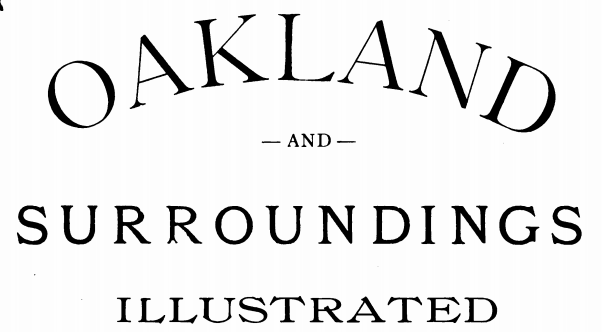As I take a little break from my series on the schools in Oakland, I thought I would share this little bit of history with you.

. Documentation Compiled After. Photograph. Retrieved from the Library of Congress, <www.loc.gov/item/ca0013/>.
I’ve seen these photos many times before while doing research. They appeared again yesterday, so I decided to investigate and see what I could find.

. Documentation Compiled After. Photograph. Retrieved from the Library of Congress, <www.loc.gov/item/ca0013/>.
Both photos are online at the Library of Congress. Please note that the LOC description contains a typo. The address is 669 Eighth Street.
- Thomas Mahoney House – LOC


I don’t know what happened to the house after these photos were taken. I will let you know if I find out.
Update: I found a 1979 article in the Oakland Tribune stating that the house was moved to a new location because it was in the way of the proposed freeway.
Early Pioneer
So, I started looking into Thomas Mahoney (sometimes spelled Mahony). I was amazed to find a Thomas Mahoney living at 669 Eight Street in 1871. In the 1880 census, he lived there with his wife and four children. I then located in an obituary from January 1900. In the obituary, I notice his daughter Laura’s married name is Bassett


Mahoney came to California in the 1850s. He mined for a while in Tuolumne County before retiring on his ranch in the Hills of Oakland. In 1863, he sold his ranch and moved to the home on Eighth Street next to St. John’s Episcopal. He was married in 1863 and raised four children in the house. His wife died in 1891, and he died in 1900.
His obituary
Oakland Tribune Jan 29, 1900
Thomas Mahoney, a well-known pioneer of this city, died at his home at 660
Eighth Street, last evening, in the 71st year of his age.
The deceased was a native of Ireland who came to this State many years ago to ranch. He owned a large tract of land to the north of the present city limits, from which the managers of the burial places purposely carved the sites now comprising Mountain View, St. Mary’s, and the Jewish Cemeteries.
The deceased was a widower, his wife having died several years ago. He was the father of Mrs. Laura J. Bassett, Louise H., Emma E., and George Mahoney.
The funeral services will be held next Wednesday in St. John’s Episcopal
Church. The interment will take place in St. Mary’s Cemetery.

- Find a Grave – Thomas Mahoney
Family members continued to live in the home until around 1913.
St. Mary’s Cemetery
1863, Archbishop Alemany purchased 36 acres of land from Thomas Mahoney, known as the “Mahoney Ranch.” The land is now St. Mary’s Cemetery, next to Mountain View Cemetery. Thomas Mahoney was buried there in 1900.
Find A Grave – St. Mary’s Cemetery – Thomas Mahoney

Book by Joseph Eugene Baker

- History of St. Mary’s – Oakland May 22, 1952
- St. Mary Cemetery – website
The Knave
Laura Mahoney Bassett was well known for her reminiscences in the Sunday Knave of the Oakland Tribune. She was Thomas Mahoney’s oldest daughter, born in Oakland in 1866, and lived there for most of her 80 years. She died in 1950.

Some of her “reminiscences” in the Sunday Knave.


Go here to read the clip: Oakland Tribune.
Charley Hamilton
In 1960, Charley Hamilton lived at 669 Eighth St. with his dog, “Lady,” a pedigreed boxer.

Charley would push Lady around town in her special baby buggy.
When Lady wasn’t riding in style, she sang with Charley while he played the harmonica.


























































































































